First Wildlife Photographer Of The Year 2021 Images Revealed
Two Australians’ images are among the Natural History Museum's Wildlife Photographer of the Year exhibition now in it's fifty-seventh year.
With a record-breaking number of entries from around the world, the judges of the fifty-seventh Wildlife Photographer of the Year have had the toughest job yet. The photographs are a compelling reminder of the importance of the variety and variability of life on Earth in securing the future of our planet, revealed just ahead of the first phase of the global UN conference of COP15 on biodiversity.
This year's Wildlife Photographer of the Year competition was the most competitive yet, attracting over 50,000 entries from photographers in 95 countries. Every entry was judged anonymously on its creativity, originality, and technical excellence by an international panel of industry experts.
The winning images, along with the two grand title winners, will be announced during a virtual awards ceremony, broadcast live from the Museum's famous Hintze Hall on the evening of Tuesday 12 October.
The Australian works are:
A Caring Hand (Douglas Gimesy)
An orphaned grey-headed flying fox rests at a wildlife shelter, after feeding on special formula milk.
Grey-headed flying foxes are endemic to eastern Australia where they play a key role in seed dispersal and pollination. The species is threatened by increasing heat-stress events as well as the destruction of their forest habitat and the encroachment of urban life.
Orphaned at just three weeks old, this pup will be weaned onto fruit at eight weeks and eventually flowering eucalyptus. After a few months, she will join a crèche and build up flight fitness, before being moved next to Melbourne's Yarra Bend bat colony for eventual release.
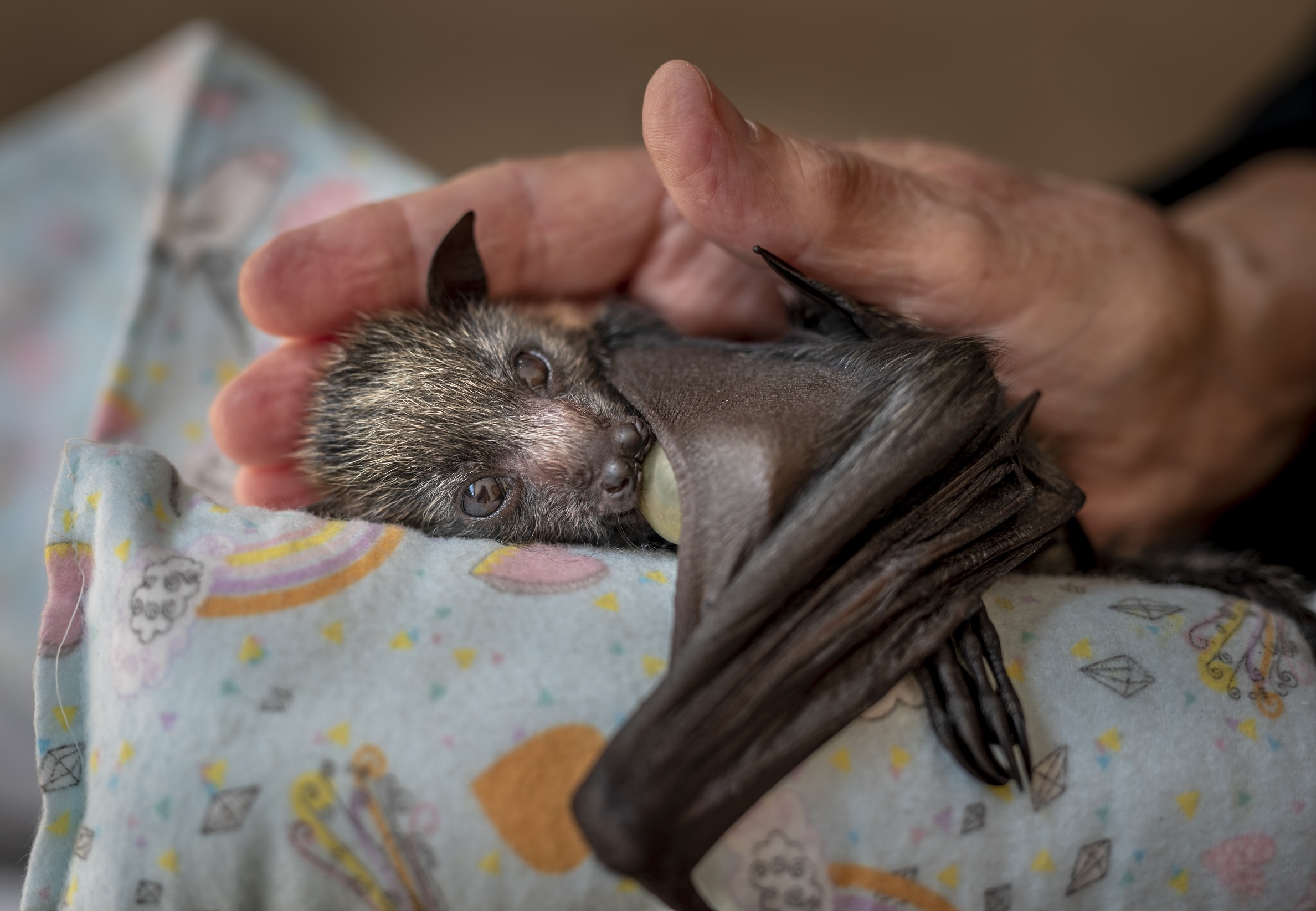
© Douglas Gimesy, Wildlife Photographer of the Year
Doug says ‘’I’m extremely honoured and humbled to share that my image ‘A caring hand’, has been awarded a Highly Commended in the Photojournalism category of this year's prestigious Wildlife Photographer of the Year (WPY) competition. ‘’
‘’My hope is the images and information I share, will inspire people to discover, value and protect the natural world. https://instagram.com/doug_gimesy’’
Mushroom Magic (Juergen Freund)
A glowing ghost fungus blooms in hand-sized fruiting bodies from a dead tree in Queensland, Australia.
Mushroom Magic was Highly Commended in the 2021 Plants and Fungi category
Jurgen used a torch to explore the rainforest near his home, turning it off every few metres to search for the eerie glow of the ghost fungus.
Once he found it, Jurgen spent 90 minutes crouching on the damp, dark floor in order to photograph the fungus at different focal points. He eventually took eight five-minute exposures which he later merged to create one, sharp-focus image.
Scientists know that the ghost fungus makes light through a chemical reaction (luciferin oxidising in contact with the enzyme luciferase), however the reason why the fungus glows is a mystery. No spore‑dispersing insects seem to be attracted by the light, which is produced constantly and may just be a by-product of the fungi's metabolism.
Juergen says ''I am finally able to announce that my glowing fungi "Mushroom Magic" image is honoured Highly Commended in the PLANTS AND FUNGI category at this year's 57th Wildlife Photographer of the Year competition.
I vividly remember this full moon night when Stella and I photographed bright bioluminescent fungi in the middle of a tropical highland.’’
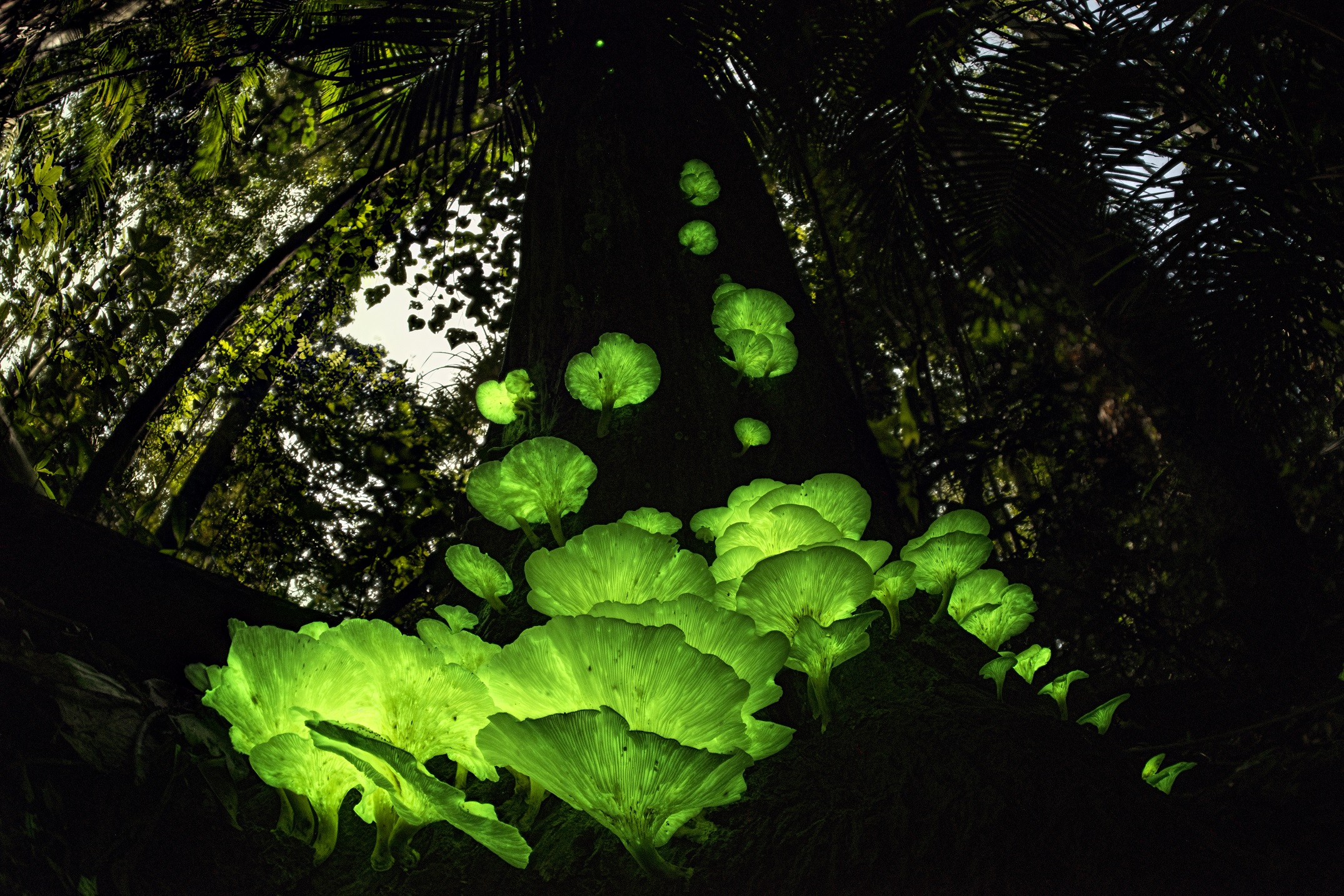
© Juergen Freund, Wildlife Photographer of the Year
From lynx making a comeback to a striking ecological disaster to Narwhal shrimp communicating at great depths; these are just some of the unique and fascinating images in a special selection of Highly Commended photographs that have been released ahead of the opening of the highly anticipated exhibition on Friday 15 October 2021, at the Natural History Museum in London.
Broadcast live from the Natural History Museum, the free event will once again be hosted by BBC presenters and wildlife experts Chris Packham and Megan McCubbin and feature photographers, Museum scientists and special guests.
Among the newly revealed Highly Commended images is Sergio Marijuán’s young Iberian lynx framed in the doorway of an abandoned hayloft; a species that was once on the brink of extinction is now rising in numbers thanks to ongoing conservation efforts. Other images tell the story of nature under pressure, like the vibrant designs captured by Gheorghe Popa, which are the result of heavy metals from mining seeping into the river.
Chair of the judging panel, Roz Kidman Cox says, 'It was the overall quality of entries that took us by surprise. With most travel plans cancelled over the past year, photographers seem to have spent extra time considering what gems to submit. There are stand-out pictures of unforgettable scenes and encounters – those unique wild moments, skillfully framed, that result from knowledge, experience and planning – but also fresh, beautiful observations of nature close to home or in close-up. The result is a collection of both thought-provoking images and ones that, in these dark times, remind us of the joy and wonder to be had from nature.’
Dr Doug Gurr, Director of the Natural History Museum says, 'These extraordinary images showcase the rich diversity of life on Earth and spark curiosity and wonder. Telling the story of a planet under pressure, the Wildlife Photographer of the Year exhibition illuminates the urgent challenges we face and the collective action we need to take. This year’s inspiring exhibition will move and empower audiences to advocate for the natural world.’
After the flagship exhibition is unveiled at the Natural History Museum, the 100 images will embark on a UK and international tour, bringing the emotive power of wildlife photography to millions of people, including those who live in Sydney.
Below run a selection from those early released highly commended images. Which is your favourite?
The Great Swim by Buddhilini de Soyza was Highly Commended in the 2021 Behaviour: Mammals category (leopards)
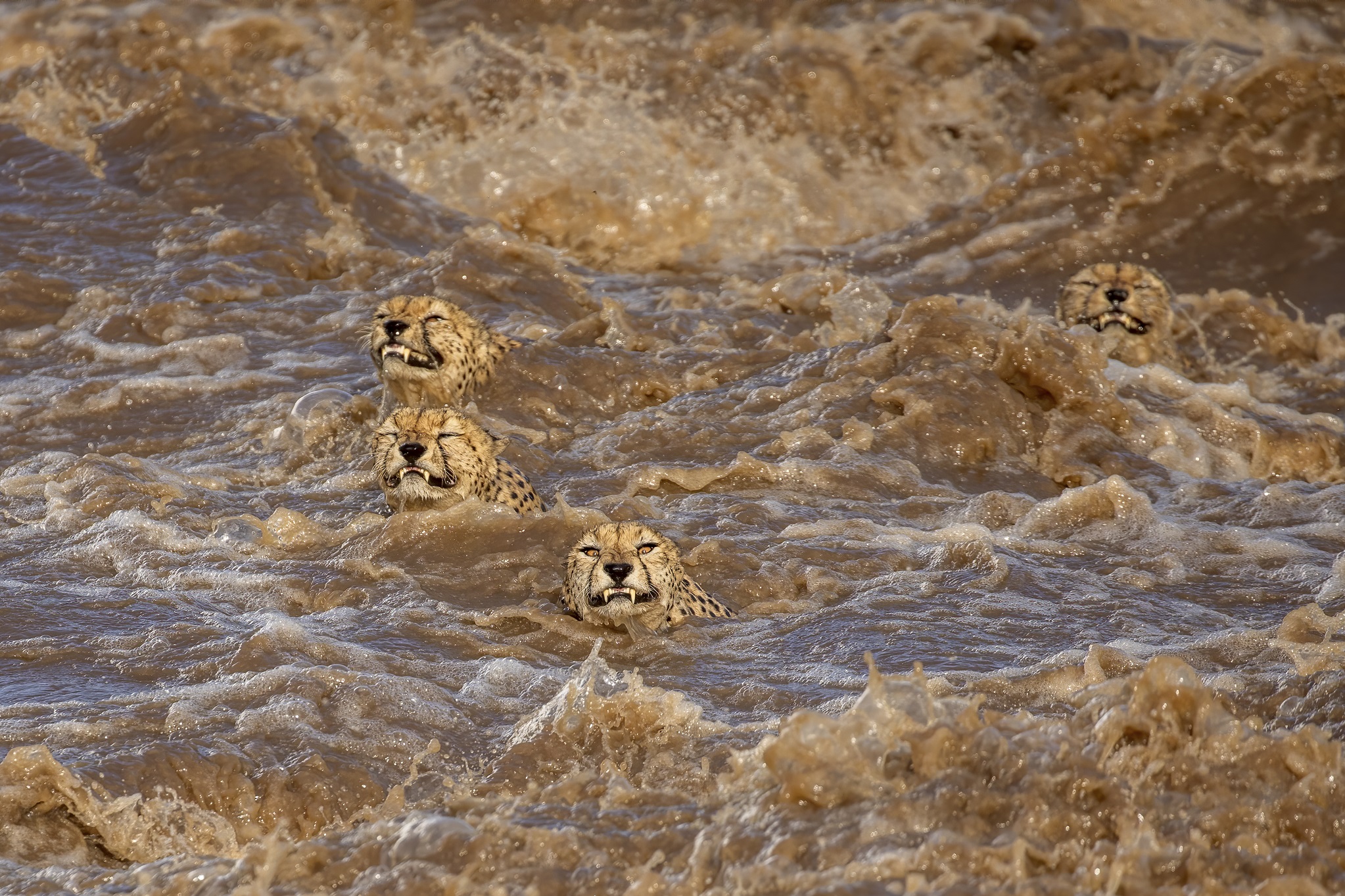
© Buddhilini de Soyza, Wildlife Photographer of the Year
Toxic Design (Gheorghe Popa)
Gheorghe was flying his drone over the Geamana Valley within Romania's Apuseni Mountains when he was struck by the unique colours and patterns of this small river.
Toxic Design was Highly Commended in the 2021 Natural Artistry category. While it may look beautiful, the unnatural colours are the result of toxic chemicals which flow downstream from the nearby Rosia Poieni mine which exploits one of the largest deposits of copper ore and gold in Europe.
The once picturesque valley has become a 'tailings pond' filled with an acidic cocktail, containing pyrite (fool's gold), iron and other heavy metals, laced with cyanide. These toxic materials have infiltrated the groundwater and threatened waterways more widely.
In the late 1970s, more than 400 families living in Geamana were forced to leave to make way for waste flowing in. Gheorghe hopes that his image will 'draw attention to the ecological disaster'.
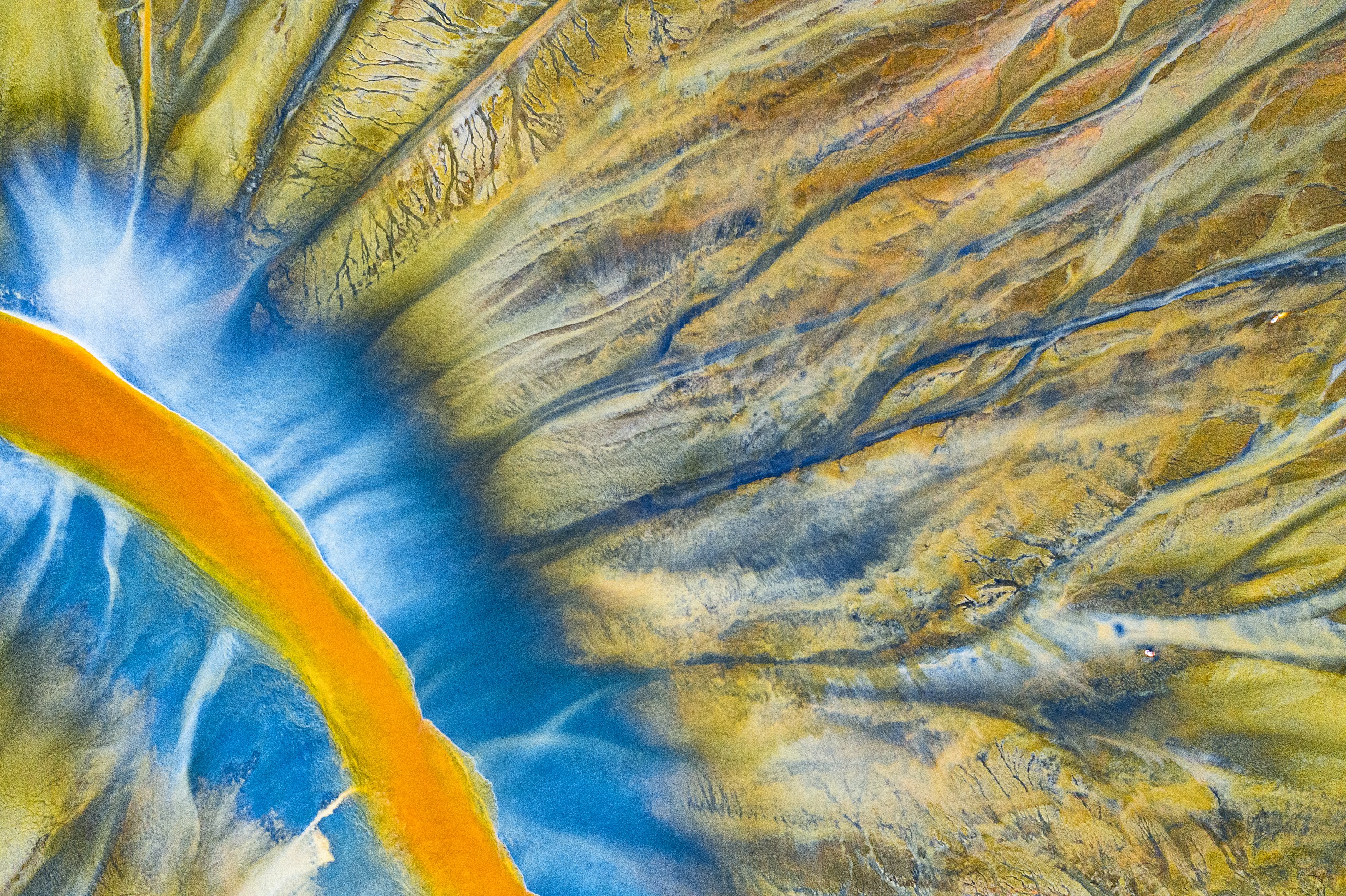
© Gheorghe Popa, Wildlife Photographer of the Year
Apollo Landing (Emelin Dupieux)
As dusk starts to fall, an Apollo butterfly settles on an oxeye daisy in the Haut-Jura Regional Nature Park on the French‑Swiss border.
Apollo Landing was Highly Commended in the 2021 11-14 Years category
The Apollo, a large mountain butterfly with a wingspan of up to 90 millimetres, has been affected by the warming climate and is now one of Europe's most threatened butterflies.
Emelin was on holiday when he found himself in an alpine meadow surrounded by butterflies. He had long dreamed of photographing an Apollo, so he set to work in the falling light to get his perfect shot.
Though slow flyers, the Apollos were constantly on the move and the gentle breeze meant the daisies were moving too.
After numerous adjustments of settings and focus, Emelin finally achieved his emblematic image: the whites standing out in stark contrast, and just daubs of colour from the yellow hearts of the daisies and the red eyespots of the Apollo.
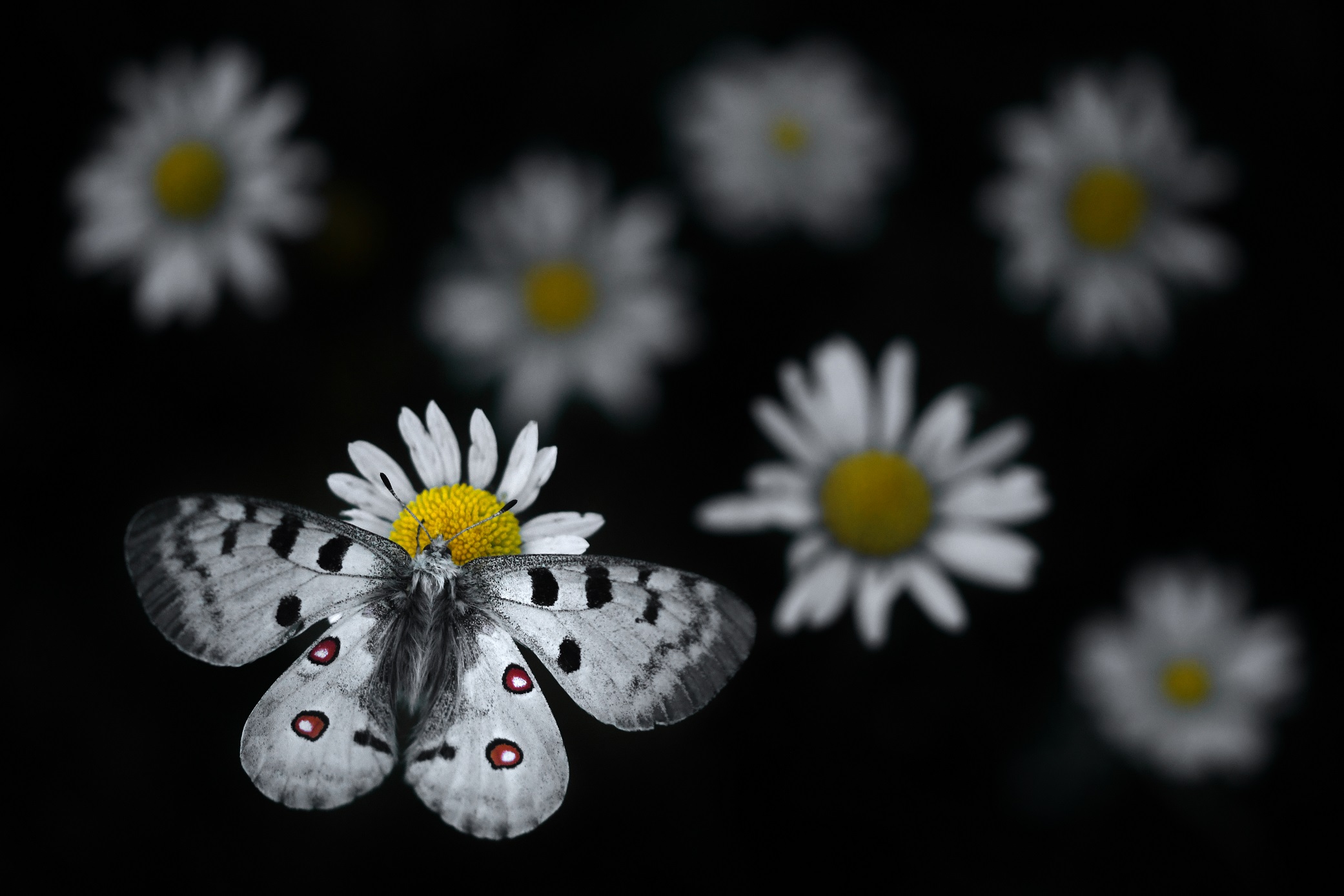
© Emelin Dupieux, Wildlife Photographer of the Year
Lockdown Chicks (Gagana Mendis Wickramasinghe)
10-year-old Gagana watched as three rose-ringed parakeet chicks emerged from their nest to greet their returning father.
Lockdown Chicks was Highly Commended in the 2021 10 Years and Under category
The family of parakeets had nested in a dead areca-nut palm in the backyard of Gagana's parents' home in Colombo, Sri Lanka. His parents had intentionally left the tree standing in the hopes of attracting wildlife. The tree proved to be an important source of entertainment as the island went into lockdown during the spring of 2020.
Gagana and his older brother spent hours experimenting with their cameras, sharing lenses and a tripod, in the hopes of getting a photo with the chicks showing themselves.
Also known as ring‑necked parakeets, these medium-sized parrots are native to Sri Lanka, India and Pakistan as well as parts of sub‑Saharan Africa, but feral populations are now found in many countries including the UK. Parakeets are a common sight in some urban settings, where they are known to breed in holes in brick walls.
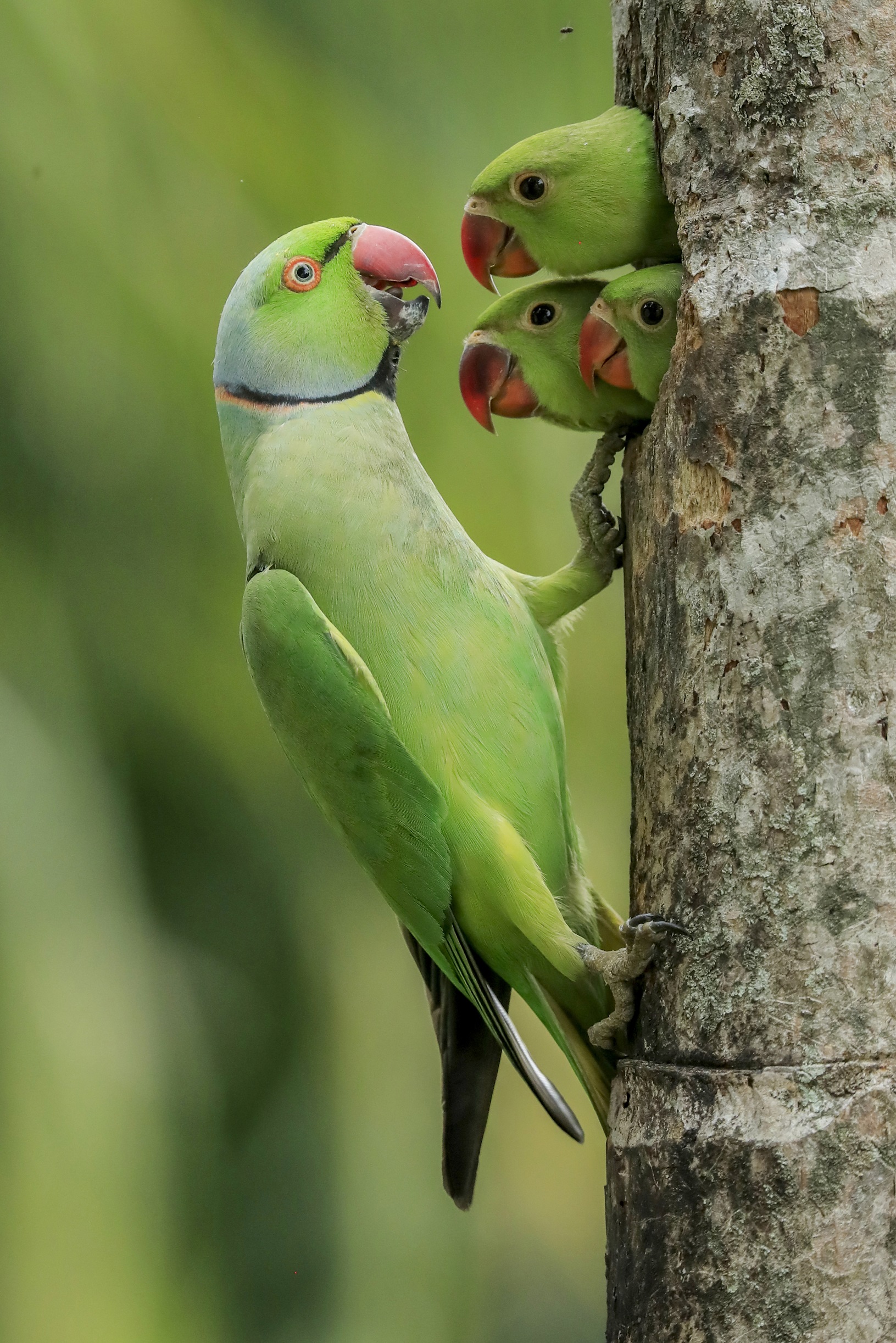
© Gagana Mendis Wickramasinghe, Wildlife Photographer of the Year
Deep Feelers (Laurent Ballesta)
In deep water off the French Mediterranean coast, a vibrant community of thousands of narwhal shrimps stay connected by their long outer antennae.
Deep Feelers was Highly Commended in the 2021 Underwater category
Laurent's photo shows each shrimp in touch with its neighbours via their antennae and suggests that, potentially, signals were being sent across a far‑reaching network. Research has shown that such contact is central to the shrimps' social behaviour, in pairing and competition.
Against the deep blue of the open water, floating among the feathery black coral - which is white when living - the translucent narwhal shrimps looked exceptionally beautiful with their red and white stripes, long orange legs and sweeping antennae.
These shrimps are fished commercially by bottom-trawling vessels which destroy the slow‑growing coral forests as well as the communities of shrimps that live among them.
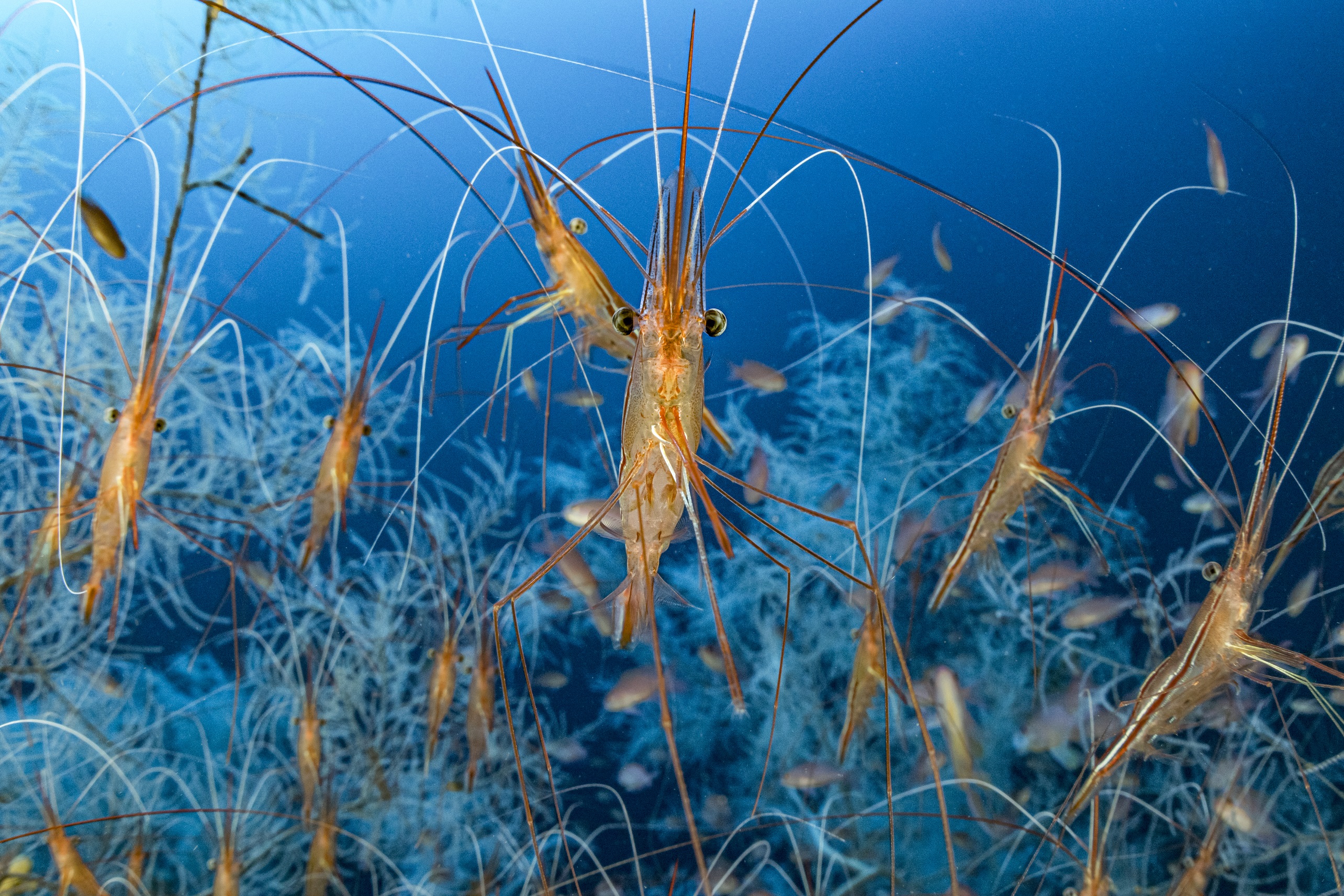
© Laurent Ballesta, Wildlife Photographer of the Year
Storm Fox (Jonny Armstrong)
A fox searches for salmon carcasses at the water's edge on a tiny island in Karluk Lake, Alaska.
Storm Fox was Highly Commended in the 2021 Animal Portraits category
As one of only two foxes on the tiny island, she was surprisingly bold. Jonny had followed this vixen over several days, watching her forage for berries, pounce after birds and playfully nip at the heels of a young brown bear.
Taking advantage of the dramatic light created by a storm rolling in, Jonny laid low on his chest, aiming for a low, wide angle.
Working with a manual flash, he preset the power for a soft spotlight - just enough to bring out the texture of her coat.
As the confident fox came closer, Jonny's companion and fellow researcher raised the diffused flash for him, piquing the curiosity of the fox.
When it looked up at the mysterious object Jonny got his atmospheric portrait which looks almost studio-shot, just in time before the storm rolled in and drenched the scene in rain.
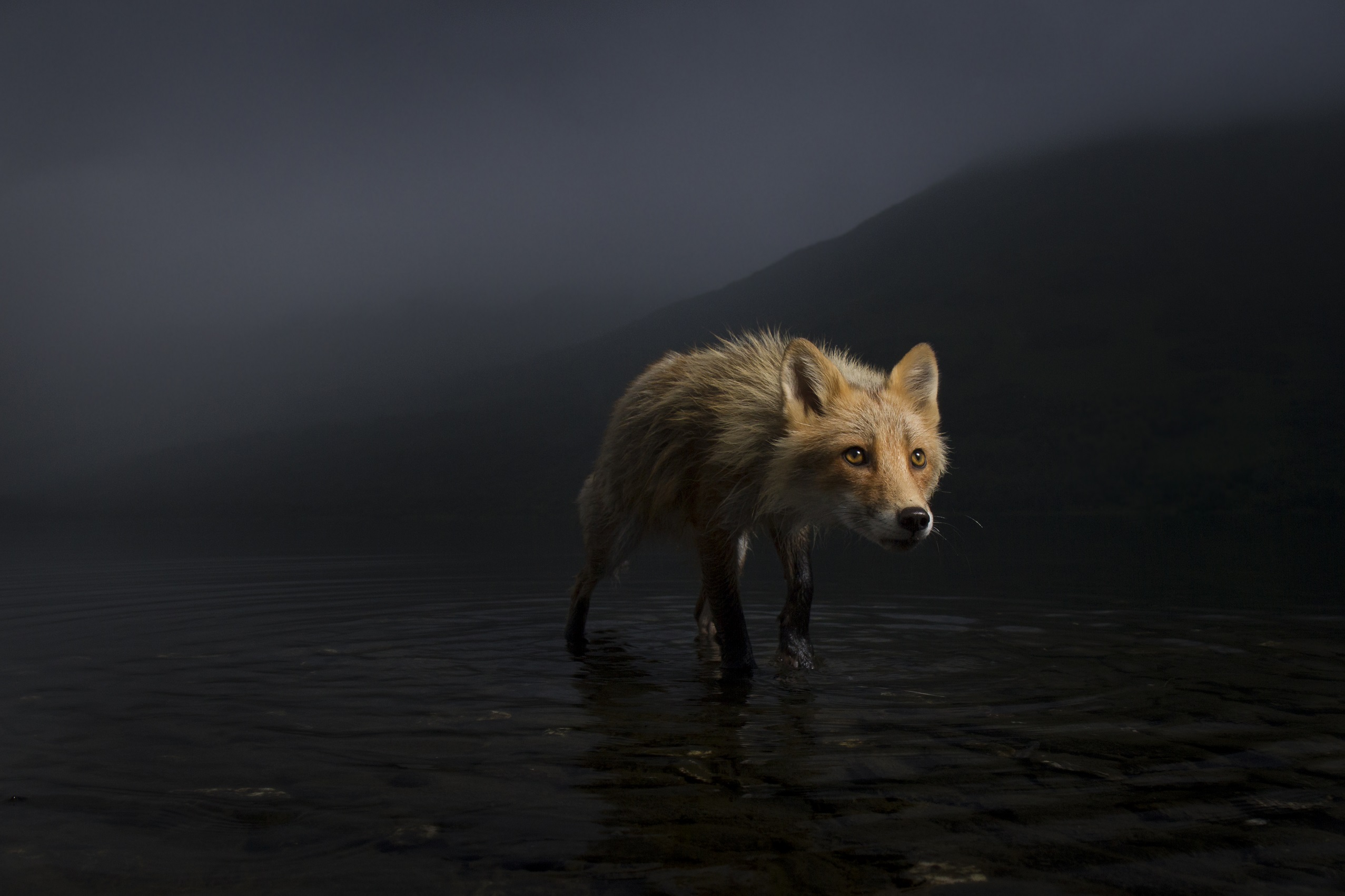
© Jonny Armstrong, Wildlife Photographer of the Year
Net Loss (Audun Rikardsen)
The devastating result of overfishing on our oceans. A mass of dead and dying herring cover the surface of the sea as far as the eye can see, just off the coast of Norway.
Net Loss was Highly Commended in the 2021 Oceans: The Bigger Picture category
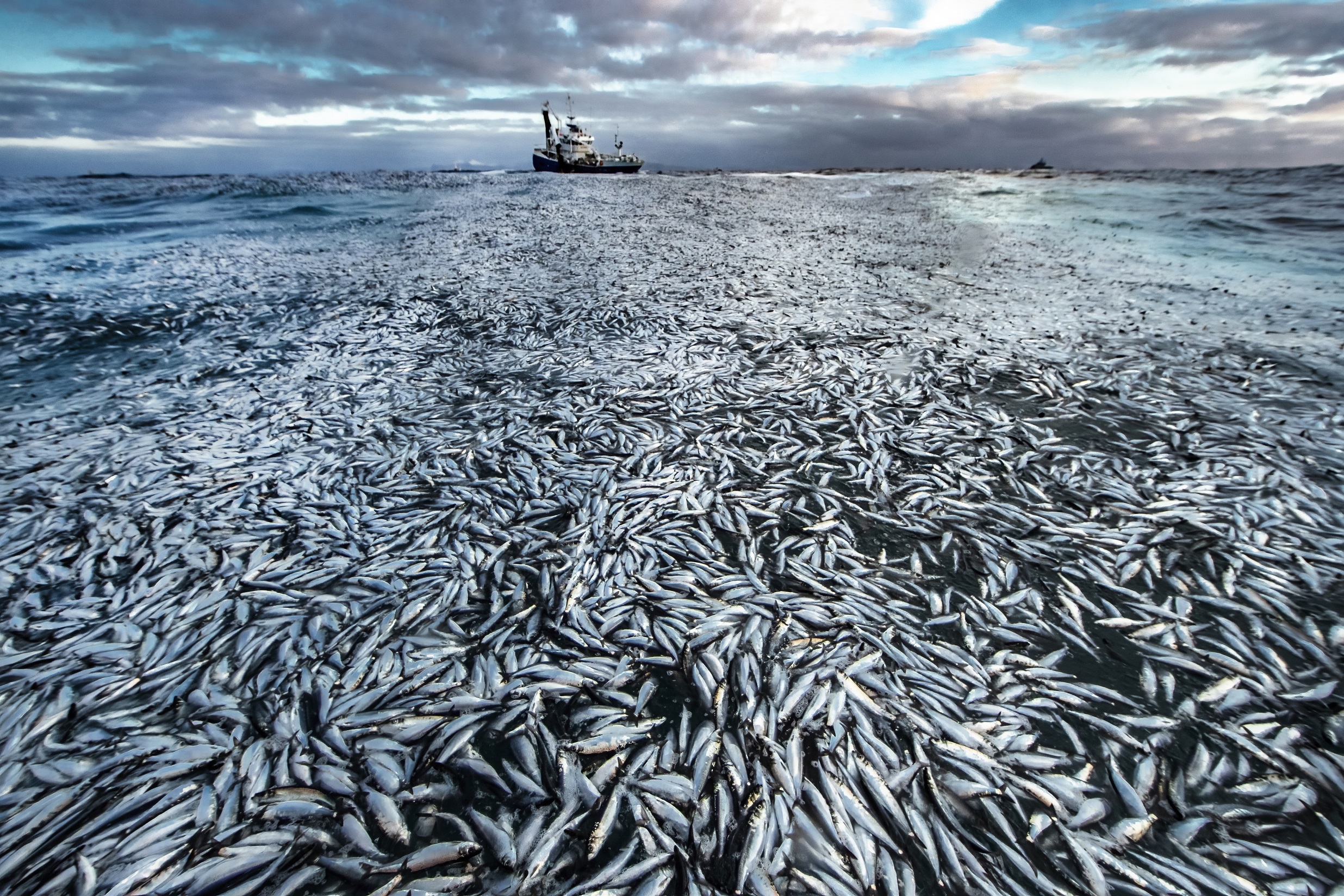
© Audun Rikardsen, Wildlife Photographer of the Year
From his position on board a Norwegian coastguard vessel, in the area to track killer whales, Audun was able to photograph the entire scene.
The boat had caught too many fish. When the net was winched up, it broke, releasing tonnes of crushed and suffocated animals back into the water. Audun's photos documented this crime against nature and were later used as evidence in a court case that resulted in a conviction and fine for the owner of the boat.
Overfishing poses a massive threat to our ocean ecosystems and according to the UN Food and Agriculture Organization, more than 60% of fisheries today are either fully fished or collapsed, and almost 30% are considered overfished.
Norwegian spring-spawning herring - part of the Atlantic herring population complex - was almost fished to extinction in the 1960s, in a classic example of how a combination of bad management, a lack of knowledge and greed can have a devastating and sometimes permanent effect on a whole ecosystem.
It took 20 years and a near‑ban on fishing for herring populations to recover. However, as Audun's picture shows, it is a recovery that needs continued monitoring.
Lynx on the Threshold (Sergio Marijuán)
Photographed through the doorway of an abandoned hayloft on a farm in eastern Sierra Morena, Spain, a young Iberian lynx pauses to survey its surroundings.
Lynx on the Threshold was Highly Commended in the 2021 Urban Wildlife category
The species was once widespread across the Iberian Peninsula of Spain and Portugal, but it declined following prolonged habitat loss, loss of prey and hunting and killing by farmers.
By 2002 there were fewer than 100 lynxes in Spain and none at all in Portugal.
Now, however, thanks to conservation practices, the Iberian lynx has escaped extinction and is fully protected across the region. Ongoing practices of rewilding, prey boosting and the creation of natural corridors and tunnels have helped numbers increase.
This individual is the latest in a family line to make use of the abandoned hayloft, where Sergio's carefully positioned camera-traps document family life.
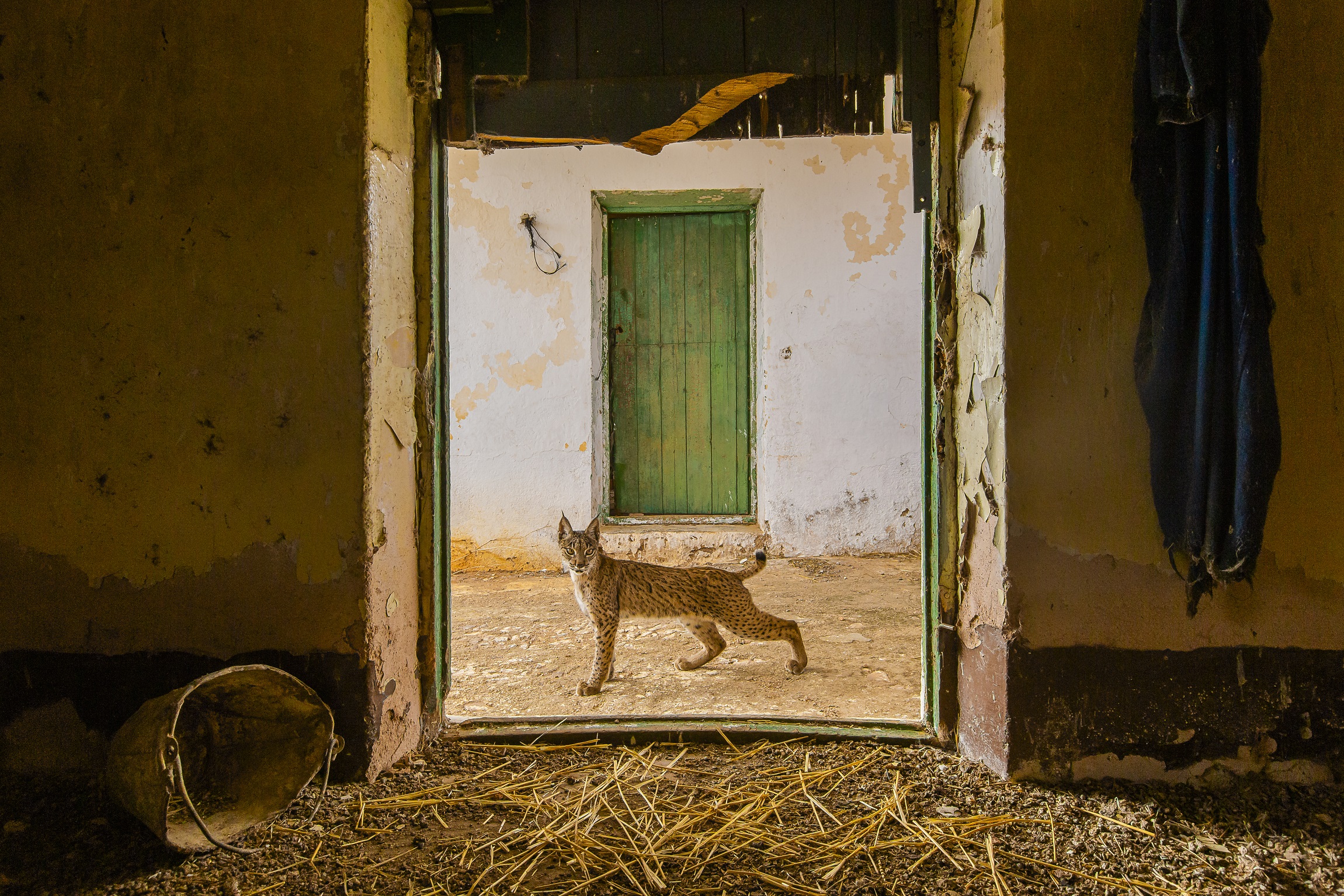
© Sergio Marijuán, Wildlife Photographer of the Year
Up for grabs by Jack Zhi
A juvenile white-tailed kite reaches to grab a live mouse from the clutches of its hovering father.
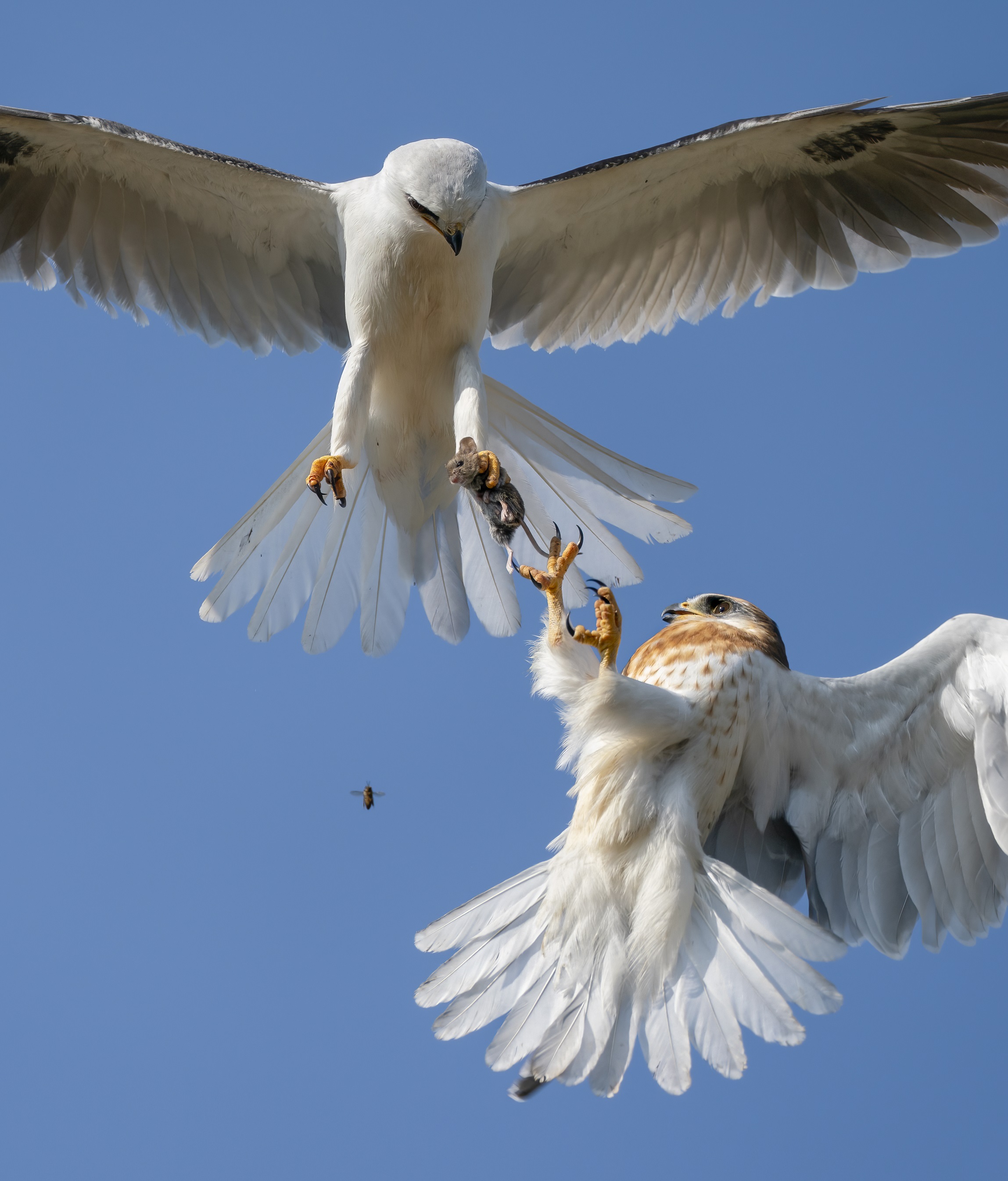
© Jack Zhi, Wildlife Photographer of the Year